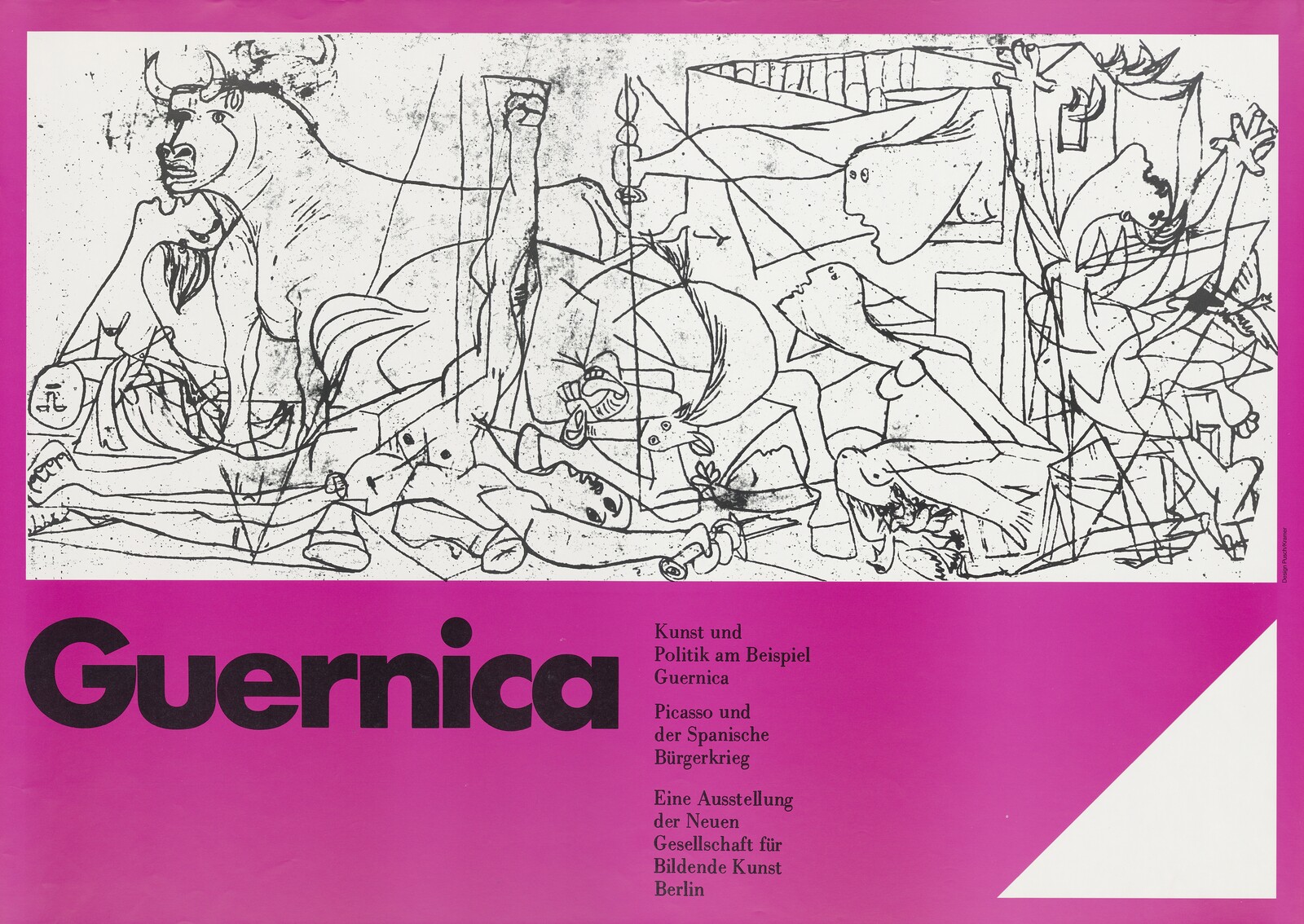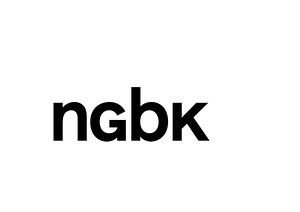Guernica and the War in the Cities
September 15, 2022–January 14, 2023
Artists: Mikhail Lylov and Dana Kavelina, with David Riff and Guglielmo Piva, Eran Schaerf
Salud—Picasso Speaking: Guernica and the War in the Cities revisits traces and threads of the (art) histories associated with Pablo Picasso and relates them to current conflicts.
There was an international war raging in Europe, to which the Spanish-French artist Pablo Ruiz Picasso had responded with his monumental painting Guernica in 1937. Picasso’s famous dove of peace, which Bertolt Brecht used, without asking, on the Berliner Ensemble’s theater curtain in 1953, followed later. Despite his doves of peace, the GDR authorities remained suspicious towards the “formalist” Picasso. The theater curtain remained in use until 1993 and has been recently reused on the occasion of the Russian invasion of Ukraine.
Some of these stories were recently revisited in the outstanding exhibition The Divided Picasso in Museum Ludwig in Cologne. The exhibition also referred to the NGBK’s (since 2012 nGbK) traveling show Art and Politics: The example of Guernica. Picasso and the Spanish Civil War from 1975 which was presented in numerous West German schools, cultural centers and even at the Venice Biennale. The show was exemplified by a WDR television report in which teenagers in a comprehensive school in Essen spoke of their dreams of a more peaceful future. The NGBK’s “didactic exhibition” criticized the war crimes of the German Army (ger. Wehrmacht) and analytically dissected Picasso’s panoramic painting Guernica into meaningful individual parts. In doing so, West Berlin’s artistic Left showed that its association to the GDR went beyond the geography of the NGBK’s location at the Kreuzberg border to East Berlin.
The exhibition title quotes Picasso as he picked up the phone in his symbolic role as director of the Prado Museum to speak to the Second American Artists’ Congress (AAC) in New York in December 1937, in the middle of the Spanish Civil War. He continued his address by demanding solidarity with the international resistance to Franco, Hitler and Mussolini. In 1939, the AAC managed to bring Guernica to New York to raise money to help Spanish refugees. After further journeys, the painting ended up in MoMA until it returned to a democratic Spain in 1981.
The artist, who had fled before Franco’s fascism and had long been stateless and without legal rights in France, joined the Communist Party in 1944. In exile, Picasso maintained connections with the illegal Spanish CP and donated large amounts of money to his comrades. Although the artist rarely left his various studios after 1945, he was regularly present at peace congresses in Rome, Moscow and Sheffield. However, the “divided Picasso” never travelled to the successor states which had formed after the dismantling of the German Reich.
Salud—Picasso Speaking: Guernica and the War in the Cities gathers material and stories in an exhibition about an exhibition about exhibitions and books. Berlin-based Israeli-German artist Eran Schaerf will reflect on the Cologne exhibition which he curated with Julia Friedrich (formerly curator at Museum Ludwig, now at Jewish Museum Berlin). The Hellersdorf exhibition will also look at Picasso’s equally unique and ambivalent role as a global artist around whom a posthumous exploitation industry thrives. The Berlin-based Russian artist Mikhail Lylov and the Ukrainian artist Dana Kavelina will dedicate a sound work to this issue, in collaboration with David Riff and Guglielmo Piva.
Artistic contributions: Mikhail Lylov and Dana Kavelina with David Riff and Guglielmo Piva, Eran Schaerf
Exhibition design: Madeleine Stöber
nGbK project group: Juan Camilo Alfonso, Jochen Becker, Eva Hertzsch, Margarete Kiss, Constanze Musterer, Adam Page, Ralf Wedekind
station urbaner kulturen/nGbK Hellersdorf is part of Urbane Praxis.
Funded by the LOTTO-Stiftung Berlin and the Senate Department for Culture and Europe
Partner of Berlin Art Week
Press contact:
Anna Schanowski, presse [at] ngbk.de


